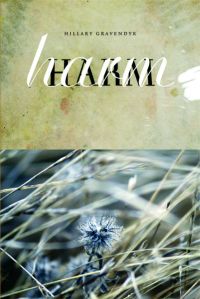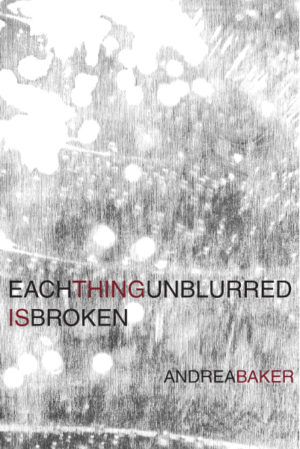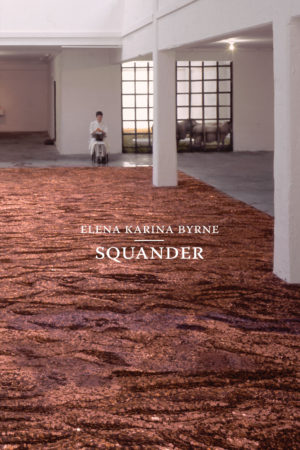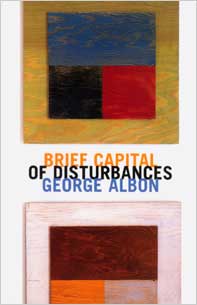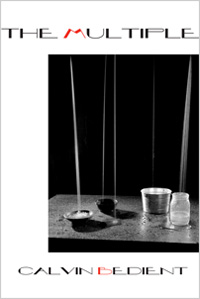Description
Offering a new narrative of physical body constituted in perilous scenes of contact, Harm performs the loss of that fictive division between a unified body and its surrounding world. Terrifying and unlooked- for harmonies emerge in these poems, which dwell in a medicalized landscape where both the body and the land are monitored and laid bare. Troubling the idea of cure by recasting it in the terms of harm, Harm shifts between warning and error, nature and the body. In the sense of Baudelaire’s “correspondences,” bloodclots externalize into “sunclots” and the air is “rusty with blood.” The book troubles the idea of cure by casting it also as a form of harm itself. Moving amid the prose poem and the lyric, Harm navigates a landscape of extremity both frightening and filled with wonders.
Finalist, 2013 California Writers Exchange Award
Harm, Hillary Gravendyk’s powerful first book of poetry, is a book that resists summary—indeed, one might aptly term it a book of resistances. It offers a record of an event, or of a sequence of micro- events, experienced variously, through positives (registering reality as it appears) and negatives (registering shock—as dismay, but also as wonder). One can assume that facets of Merleau-Ponty’s phenomenology, and in particular his emphasis on the body as the site of perception (the body as perception’s human home), have contributed something to the conceptual substance of Gravendyk’s own meticulous attention to the degrees of body and mind by which we live. But the intensities, and the micro-wisdoms that burst from moments she has liberated into exquisite phrases, are indebted not to philosophy but to experience. Harm is a book of awarenesses and sensations; it articulates the micro-wisdoms of that peculiarly timeless condition that is everyday life, the site of lyric embodiment and our extraordinary mortality.
Lyn Hejinian
Harm encompasses us, a condition of the human. Hillary Gravendyk’s Harm builds a botanica of hurts and healings, ruptures and resolutions. Its prose poems flesh out a world of intention and resemblance, and its exploded lyrics ring with ‘bright sound.’ The poems are beautiful and seek to rethink the beautiful, inviting us into a world that ‘riots and unspools.’
Elizabeth Willis
In describing an ancient ritual intended to bring bees back into the hive—to regenerate the empty cells and make them hum again with life—Virgil asks ‘what god was this that fashioned such an art?’ If the life force is a mystery to us today; imagine how it must have seemed then. Despite—or perhaps because of—advancements in technology, medicine might just as well be that kind of sorcery to most of us–a set of spells that, if cast correctly, has the potential to rise to the level of the miraculous. So, too, art and poetry (Apollo’s other gifts to humanity). Why then do we seem to invest less belief in them than we do in science? Look at Hillary Gravendyk’s Harm: is this not proof of the goodness of language; the majestical properties of poetry; the quick electric energy of creation? Here is a little hive buried in the chest, a pulse so vital as to be felt long after any single mortal moment. Here is poetry to persuade us of our own existence, as well as the persistence of our everlasting souls.
D. A. Powell
There is a night inside the night inside my chest” speaks a voice in “Botanica,” the first in a chorus of voices in Harm. They are voices at once intimate and unknown. The intelligence in these poems calls on the natural world and our own inventions for assistance as it climbs, in astonishment and pain, “the long staircase of wounds.” Its commonality is spread far beyond the human to include plants and creatures of the forest, minerals in the earth; and in its world, everything is conscious and alert, from alphabets and systems of knowledge to the winking eyes of machines. Through these brilliant poems, we are given the power to breathe the air of this world, and the language to imagine it in the “fourth/color only birds see.”
Saskia Hamilton
About the Author
Reviews
Excerpt
Hillary Gravendyk passed away on May 10, 2014 after a long illness. Assistant Professor of English at Pomona College in Claremont, CA, she was the two-time winner of the Eisner Prize in Poetry and her chapbook, The Naturalist, was published by Achiote Press in 2008. Her poetry appeared in journals such as American Letters & Commentary, Barnstorm, The Bellingham Review, Berkeley Poetry Review, The Colorado Review, The Eleventh Muse, Fourteen Hills, MARY, 1913: A Journal of Forms, Octopus Magazine, Tarpaulin Sky and other venues.
Omnidawn is deeply saddened by the loss of this brilliant and talented teacher and poet. A thoughtful memorial of Hillary and her work by the poet rob mclennan can be read here.
A brief interview with Hillary Gravendyk
(conducted by Rusty Morrison)
How did this book come to its title? Why did you choose this title?
The title “Harm” really arrived at the same time as the first poems for the book—the word has a lot of resonance for me given that so much of my life has been lived in the midst of unmanageable physical harms and that responses to those harms often takes the form of another kind of harm: cure. As people read the book, I hope the title will echo with ideas around harm to nature and harm to the body and the old medical phrase “do no harm.” Part of what this book does is problematize the notion of “cure” by casting it as also a form of harm itself. The title “Harm” wants to trouble easy divisions between cure and harm, landscape and body, wakefulness and sleep. I think Harm drops a small bomb at the entry point of this book, forcing the reader to find their way in a place of partial ruin. That’s the hope, anyway.
What kinds of reader would this book appeal to? What communities to you envision this book engaging with?
This book would likely appeal to anyone interested in medical ethics and/or the human body at risk. Taking the imperiled physical body and connecting it to an imperiled landscape, the book also has some resonance for students of ecopoetry and, formally, for readers of the prose poem in general. Disability studies readers and any group that is interested in the connection between land and body at a time of global environmental crisis will find this book of interest.
Do you feel comfortable in speaking to facts of your life that these poems inhabit, transgress? And, can you share anything else about yourself?
In September of 2009, I received a double lung transplant. This book was written in the ever-widening wake of that experience. You might say that the poems exist in a sort of half-light, where divisions between sleep and wakefulness, harm and cure, are blurred. The half-light into which I woke after that major surgery. The surgery was only the most recent bodily trauma, one that was a last resort. I was diagnosed with my pulmonary condition when I was just 19 and had been making concessions to this illness for 11 years by the time I had transplant. The book is in part an attempt to recover the time that was lost to my waking mind during surgery and for several days afterward. It is also an apologia to my beloved for what love has cost in the light of my physical limits. The book is about waiting and recovering—the poems are the boundary around an empty space of unremembered experience.
I’m also an avid cook. My specialty is preserving foods and making jams and jellies. Wherever there is free fruit, I am collecting it.
Who are the authors with whom you feel a kinship? Who are you reading currently? Do you see any direct or indirect similarities between their work and your own?
I’m especially influenced by D.A. Powell, Brenda Hillman, Bob Hass, Forrest Gander, and by Tessa Rumsey’s first book, Assembling the Shephard.
What, specifically, were some of the most interesting or most daunting challenges you faced as you worked through this text? Where there any unexpected surprises—with respect to form or content—that opened in the text for you in the writing process?
What was most difficult about composing this book was revisiting a very physically and emotionally difficult part of my life, a recent part, but one that I’d been struggling to recover from. Putting myself back in that space was a challenge. Or rather, putting myself back in that space without suffering the horror of that experience all over again was the challenge. A surprise to me was the fact that I found myself turning again and again to the prose poem. I had not worked the prose poem much in the past, but for this book it was my go-to form. I’m not sure why, but my guess is that the form allowed me to blur the line between lyric and narrative, to develop poems that were never quite either thing. Even poems that ended up lineated often began as prose poems, I needed that form in order to compose this pieces, in order to compose my thoughts.
You chose the artwork that was used in the cover design for this translation. Can you talk about your reasons for this choice?
My husband, Benjamin Burrill, is a photographer, and his images are often melancholy and suggestive of a whole backstory—a story from which we are just getting one still image, one image that is embedded with a cluster of meanings. I was particularly drawn to the cover image—here was this desiccated little plant, spattered with rain, but standing upright among a sea of grasses bent and blowing hard to one side. It’s an image of both strength and weakness—the seed-head is unbroken, but it is also alone, also visibly fragile; it is a life and it holds lives within it. Harm is particularly interested in the confluence of fragility and strength, solitude and company, and of what it means to be harmed with what it means to harm.
Like Matthea Harvey, Gravendyk wields an advanced, sometimes challenging style, and yet encourages readers to find, within it, stories about her life.
The poems don’t have a conventional memoir’s conventional beginning and ending: which detail, what happened to the writer, and then how she changed herself in response. The beginning, the “what happened,” is implicit in Gravendyk’s descriptions, of, say, her lungs (“Every time I breathe it smells rusty, like blood / and when I breathe there is blood in the air”). And the end, her response, just is the language she responds with. Harm is about suffering and the ways language can embody responses to suffering. It’s a memoir about the means of memoir, about how to talk about pain.
The poems in Harm repurpose familiar vocabulary to create a new way of navigating through the world, as in “The Big, The Bad,” where we experience the re-conception of “footstep” through a catalogue of similes: “Footstep like a crumpled page”; “Footstep like a mousetrap”; “Footstep like a wind tunnel”; “Footstep like a fire blooming.” Gravendyk takes what she finds at hand and tirelessly reconfigures it, adapts it, altering position as a way to multiply perspectives, seek insight, and expand the sense of the possible. How do we exist in a world that continuously harms us, and will never quite yield to the self? There is no one answer, no “cure,” Harm tells us—“only different kinds of wonder.”
The poems of Hillary Gravendyk’s first book Harm (Omnidawn, 2011) reach toward precisely this limit, writing body, which, according to the poems, is always also a register of the enclosures and traversals of body. While speaking from the limits of embodiment, the poems also imagine forms of transformation, mobilizing simile and metaphor as a means for glimpsing worldly materials in all of their elusiveness.
As Harm’s persona becomes increasingly ill, language begins to dissipate—linking the concept of self with our ability to communicate. From reading Gravendyk’s poems, it seems that life would easily slip from us, if not for an urgency to say something. This urgency stems from our need to give love. The persona’s recovery is for a love poem—and what a love poem.
Harm surpasses the agency of trauma that death imparts. Harm opens not a sealed wound, but upon appreciation for Gravendyk’s irreproducible movements. Her brightness offers new avenues of clarity. Harm reflects art’s highest purpose, “a starker logic.” Harm is a gift as our relationship now moves “from one dream and into another.”
There is such an incredible density to Gravendyk’s language, and this collection speaks to strength and frailty, of the human body and the natural world, and count among the finest prose poems I’ve read. This is very much a book of survival, and a deeper comprehension of just how close to the bone it can come. As she writes at the opening of the poem “THE SEVEN SINS OF MEMORY,” “Pain’s absence, like a footprint in snow // but the iron had eaten into my flesh // there was nothing, nothing to record.”
Gravendyk intersperses densely metaphorical prose poems with sparser, still metaphorized, verse. In the end it’s the sure-footed lyricism of the book, the impressive music of the lines that carries the reader onward thru the at times nightmarish hospital landscape, where the body becomes interpenetrated, even fused with the digital mechanisms our century deploys to prolong, sustain, and jump-start life.
…the poems straddle dreams and wakefulness, comprehension and delusion. All are an attempt to understand the unknowable, and all pay heed to the experience of her trauma, while somehow maintaining beauty and voice. In the final poem, “Imperative,” Gravendyk writes, “I guess I’d written time was honey. Wrote myself a landscape. Slow scenery, / combed gold across the mouth and eye.”

